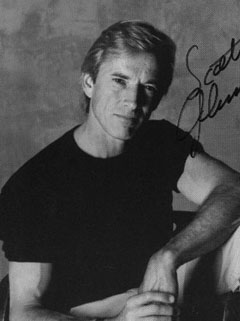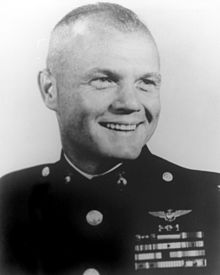POP1
Jonathan R. Davis was a gold rush prospector. On 19 December 1854, he single-handedly killed eleven armed outlaws at Rocky Canyon near Sacramento, California using two Colt revolvers and a Bowie knife. This episode is possibly the single deadliest small arms engagement in American history where one man went up against multiple foes
POP2
Jonathan Davis was born on August 5, 1816, to a prosperous family in Monticello, South Carolina. He was an educated man, having studied at the University of South Carolina. In December 1846, he enlisted in the Palmetto Regiment of Volunteers for service in the Mexican War. He was soon promoted to second lieutenant. He served with great distinction and fought in many battles; he was wounded in action at Churubusco. He was known as an expert pistol shot, and according to a friend he was "second to none in the state as a fencer." He was an honorary captain, but was called Captain Davis.
POP3
On December 19, 1854, Captain Davis and two fellow prospectors were walking down a miner's trail in Rocky Canyon in El Dorado County, on the North Fork of the American River. His two companions were armed with pistols; Captain Davis carried two Colt revolvers and a large Bowie knife.
A band of robbers was lying in wait in the canyon brush near the trail. Among the bandits were two Americans, one Frenchman, two Britons, five Australians and four Mexicans. Fourteen in all. The band had robbed and murdered six Chinese two days before, and had robbed and killed four Americans the previous day. Two of the gang had been wounded in these encounters.
As Captain Davis and his companions walked past the place of ambush, the bandit gang charged out of the brush, shooting their pistols. James McDonald, one of Captain Davis' two companions died instantly, without time to draw his revolver or react in any way. The other, Dr. Sparks, managed to get his six-shooter out and fire twice at the highwaymen before he dropped, badly wounded.
POP4
Captain Davis later described himself as being "in a fever of excitement at the time." He stood his ground and, like Wyatt Earp, kept his nerve. His aim was deadly accurate. One after another he shot down his assailants. The outlaw bullets tore at Davis's clothing but caused only two slight flesh wounds. Within moments seven of the bandits were dead or dying on the ground, and Davis's pistols were empty. At the very least seven of his twelve bullets found their target (or seven of ten if he kept one chamber empty).
Four of the remaining robbers, three armed with Bowie knives and one with a short sword, now closed in on the Captain to finish him off. With his Bowie knife Captain Davis warded off the thrusts from the two most aggressive bandits. He stabbed one of them to death; the other he disarmed by knocking the knife from his grasp and slicing off his nose and a finger of his right hand.
The two last attackers were the men who had been wounded in the previous raids. Despite their weakened condition, they foolishly approached Davis with drawn knives. As the captain explained later, he did not know that they were wounded: "Two of the four that made the charge upon me were unable to fight on account of their old wounds. They came up with the rest, making warlike demonstrations by raising their knives in a striking posture, and I acted accordingly. I noticed that they handled them with very bad grace, but attributed it altogether to fright or natural awkwardness." He killed them both.
Seven of the robbers were dead, three desperately wounded, and the eleventh, the now noseless bandit, did not appear to be fatally injured. The final three remaining outlaws fled.
POP5
Captain Davis removed his shirt, tore it to strips, and began bandaging Dr. Sparks and the wounded brigands. Suddenly Davis spotted three well-armed strangers coming up the trail. They turned out to be a John Webster and two members of a mining party camped a mile distant on a creek running into the North Fork of the American River. They had been out hunting game and had seen the entire fight from a nearby hilltop.
POP6
Someone examined Captain Davis's hat and found that at least six bullets had passed through it. Participants in a gunfight may have tendency to shoot high, given that Davis had only two flesh wounds, but all of six holes in his hat.
POP7
By nightfall the three badly wounded bandits had died. In the morning McDonald and the ten dead robbers were buried. The surviving bandit's wounds proved to be more serious than had been thought, and he died that day and was buried with the rest.
POP8
John Webster and other miners formed a coroner's jury and prepared a long statement setting forth the facts of the affair. They concluded, "From all the evidence before us, Captain Davis and his party acted solely in self-defence, and were perfectly justifiable in killing these robbers. Too much praise cannot be bestowed upon them for having so gallantly stopped the wild career of these lawless ruffians."
Seventeen miners signed the report, which was then delivered to Placerville. At the same time, John Webster wrote a long letter to a friend in Placerville offering his firsthand account ot the desperate battle in Rocky Canyon. The wounded Dr. Sparks was carried down the mountains to his home near Coloma by Captain Davis. The doctor died on December 26.
POP9
Sceptics.
The coroner's report and the letter from John Webster created a sensation in Placerville. The Placerville Mountain Democrat ran an extra edition on December 23, publishing both accounts in full. The issue was reprinted by the San Francisco and Sacramento newspapers, and eventually by major newspapers in other parts of the country. The story was considered so incredible that many doubted it. The San Francisco California Chronicle responded that "The story, though it might be considered certainly fabulous in any other country, is quite in character with things that often take place in California."
The three miners who had witnessed the fight, John Webster, Isaac Hart, and P.S. Robertson, had moved to new diggings twenty miles farther up the mountains. They had had no contact with outsiders until they were visited by a Mr. Williams, a brother-in-law of Dr. Sparks, who had searched for them for several weeks before finding their camp. Williams wanted to confirm the details of Dr. Sparks' death, and he informed the three for the first time that their account had been discredited.
On March 20, 1855, three months after the battle, Captain Davis, Williams, and the three eyewitnesses appeared in the office of the Mountain Democrat. Before Judge R.M. Anderson and a delegation of prominent citizens they recounted the battle in detail. After careful questioning of Webster, Hart, and Robertson by Judge Anderson, those present were soon convinced that the fight had taken place exactly as described. The three young miners presented letters of introduction and also gave a written statement about the battle. Their testimony in this almost formal setting settled all doubts in the public mind.



_Grissom_portrait.jpg)



